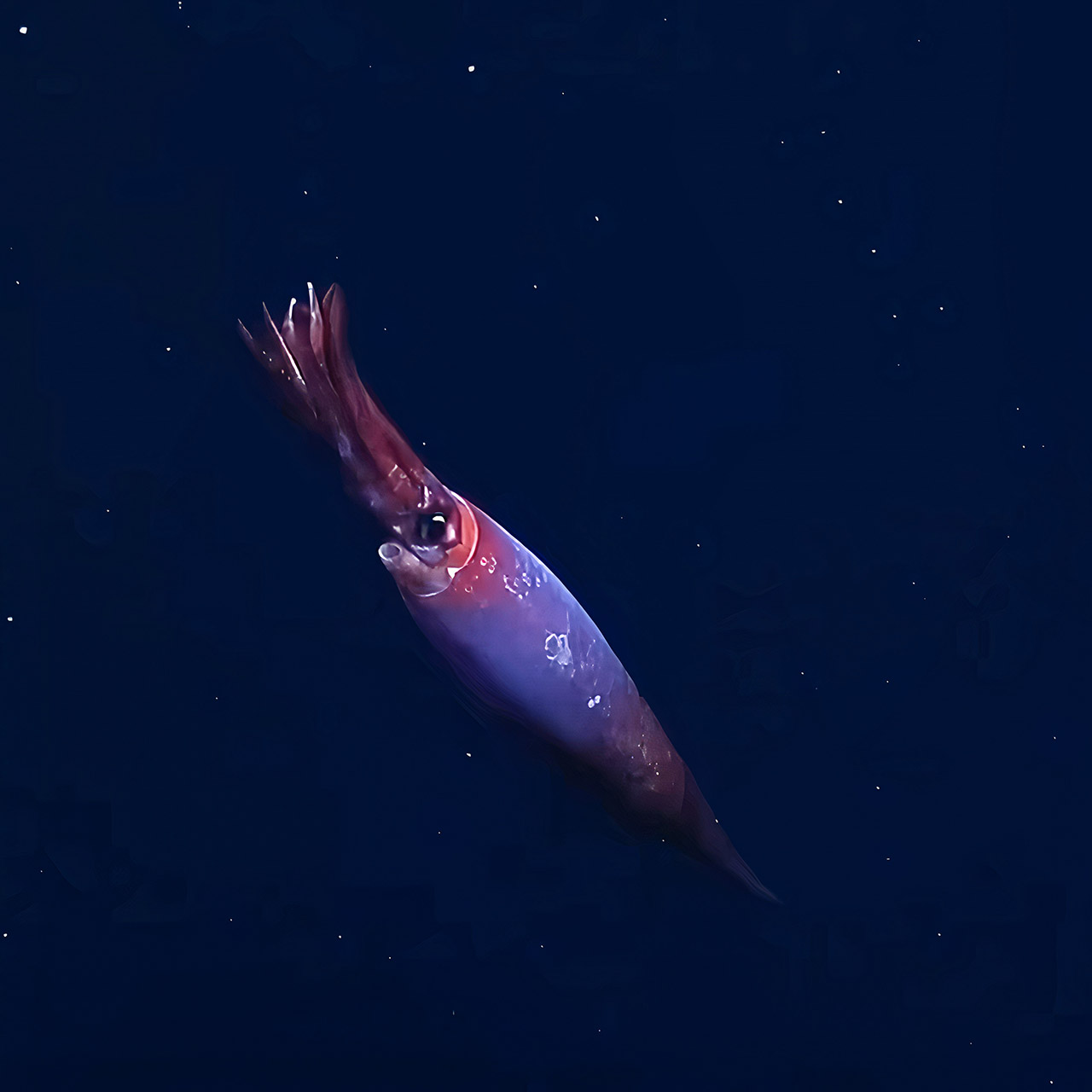
On Christmas Day 2024, a National Geographic expedition aboard the Schmidt Ocean Institute’s research vessel Falkor (too) delivered the first-ever live footage of an Antarctic gonate squid. This three-foot-long, blood-red cephalopod was spotted 7,060 feet beneath the Southern Ocean’s surface, gliding through the midnight zone.
Captured by the remotely operated vehicle (ROV) SuBastian, this sighting marks a breakthrough in marine biology, offering a rare glimpse into a species known only from carcasses and predator stomach contents until now.
Insta360 X5 - Waterproof 8K 360° Action Camera, Leading Low Light, Invisible Selfie Stick Effect, Rugged...
- 8K30fps 360° Video with Dual 1/1.28" Sensors: Capture stunning detail with dual 1/1.28" sensors shooting up to 8K30fps. Film epic adventures,...
- Triple AI Chip Design, Better Low Light: Shoot confidently even in challenging lighting. X5’s triple AI chip design powers advanced noise reduction...
- Invisible Selfie Stick: Create impossible third-person views with no selfie stick in sight! Capture everything in 360°, then choose your angles later...
Aboard the Falkor (too), the team hadn’t planned to explore the outer edge of the Powell Basin near Antarctica’s Weddell Sea. Ice blocks forced a last-minute detour, a fortunate pivot that led to the historic encounter. As the ROV plunged into the inky depths, researcher Manuel Novillo monitored the live feed in the ship’s mission control room. “Voila, it appeared,” Novillo recalls.

Kat Bolstad, a cephalopod biologist at Auckland University of Technology, confirmed the squid’s identity by spotting a defining trait: a single, large hook on each of its two longest tentacles. “It’s not consistently visible, but it is definitely there,” she says, describing the hallmark of Gonatus antarcticus. Until this moment, scientists had only studied dead specimens, hauled up in fishing nets or found in the stomachs of other animals. Bolstad’s excitement is infectious: “This is, to my knowledge, the first live footage of this animal worldwide.”
The squid’s brief appearance—two to three minutes of serene drifting before it jetted away—offered more than a visual spectacle. Using the ROV’s lasers, researchers measured its three-foot length, noting its robust condition despite visible scratches and sucker marks, possibly from a tussle with a juvenile colossal squid. Andrew Thurber, a deep-sea researcher at the University of California, Santa Barbara, who was aboard the vessel, marveled at its elegance: “You see beauty all the time in the deep ocean, and this was just one classic example of it.”
Working at such depths is a daunting challenge. The midnight zone, spanning 3,300 to 13,100 feet, is a harsh environment where pressure is immense and light absent. ROVs like SuBastian, with their bright lights and mechanical hum, often spook deep-sea creatures. “These vehicles are aliens of the deep,” Thurber explains. “So it really depends on them to come and look at us.”
For scientists like Linsey Sala, a museum scientist at Scripps Institution of Oceanography, such footage is invaluable. “Videos like this get me really excited,” she says, highlighting how they reveal behaviors and adaptations impossible to glean from preserved remains.
The expedition, part of the National Geographic and Rolex Perpetual Planet initiative, aims to document climate change’s impact on fragile ecosystems like the Southern Ocean. While the squid’s discovery wasn’t the primary goal, it underscores the vast potential of deep-sea exploration. “In the deep sea, there’s always a good chance you’re seeing something for the first time,” Bolstad notes. “The potential for discoveries is pretty much limitless.”
[Source]










